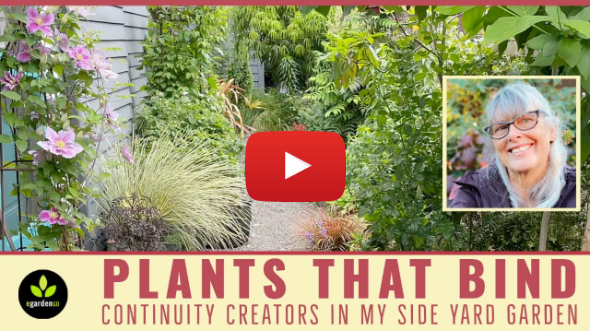 |
|
Read as a Web Page |
|
|
 |
|
How I Bring a Sense of Order to My Plant-filled Garden |
|
I've come to terms with that fact that I'm a bit of a plant collector and a plant lover—unabashed and unapologetic on both counts. I'm always on the lookout for new plants to bring home to try out in my garden. However, I’m also very committed to my garden as an expression of my artistic vision; as a four-dimensional art form.
In a recent blog post I talked about ideas for adding spring-blooming bulbs and ephemerals in the early season gaps you've noticed. Well, I took my own advice.
This spring, I've planted a LOT of new plants in my garden at home. I don't know exactly how many, but it's safe to say: dozens and dozens. Many of my recent additions are small, early-bloomers that will die back when the summer heat comes. But many other new plants for later in the season made it through my garden gate as well. |
|
So, how does a plant collector go about creating a cohesive and artful garden—one that doesn't feel chaotic or discordant—with such a large variety of plants? |
|
For a real-life example of how I've done this in one section of my garden, be sure to watch the video. And check out the blog post for specific plant ideas. |
| Watch the Video for a Real-Life Example |
| Read the Blog & Get Plant Ideas |
|
These are a few strategies that I use: |
-
Develop a color palette for your garden and then look for plants within that cohesive range of colors. For instance, I use repeated spots of burgundy, blue, silver, and blue.
-
Look for ways to make color connections based on foliage, flower, and accessories and garden ornaments. Repeating plant shape and foliage texture is another way to guide the eye.
-
Think twice about bringing home a single plant in an entirely new color scheme. Who will it play with?
-
Strike a balance: strive for enough repetition to bind your scene together and enough variation to energize and engage.
-
Observe your garden in all seasons; look for gaps that will accommodate small plant additions to use as binders.
-
Think in layers—plants can be low and ground-hugging, fill out the mid-plane, create a canopy overhead, or they can climb or cascade down a wall.
-
If your garden is small and/or running out of room, focus on the details. For example, add low plants along the edges, tall skinny flowers that mingle politely with their neighbor, and look for ways to add a season of interest to a seasonally-bare spot.
-
Placement—mix it up. Avoid placing plants that are too similar right next to each other.
-
Be willing to remove plants that aren't performing well or aren't holding your interest any longer.
-
Above all: experiment and have fun!
|
|
I hope these ideas will help you find new and creative ways to make color connections in your own garden. I am working on some follow-up videos that will talk more about planting design ideas like these. If you haven't already done so, be sure to subscribe to my YouTube Channel.
My garden is in a constant state of change—"garden" is definitely a verb around here. 😜 I realize this type of gardening isn't to everyone's taste and/or may not be what you're looking to do. If that's the case, let me do the experimenting for you. I hope you'll follow along. |
|
 |
|
|
|
|
|
Until next time! |
 |
|
|
|
|
|